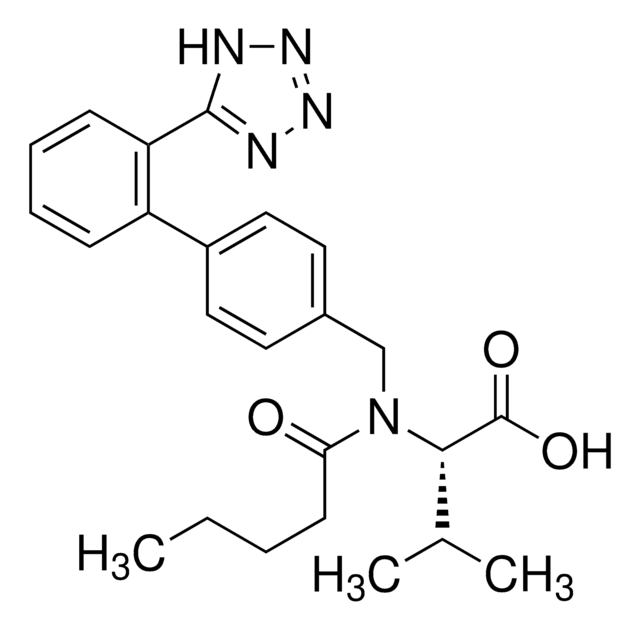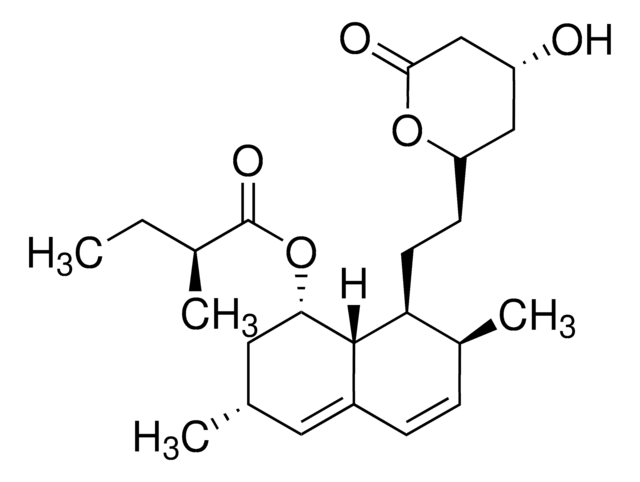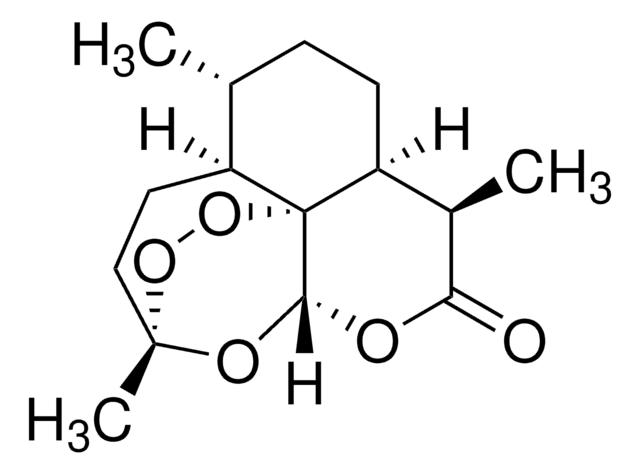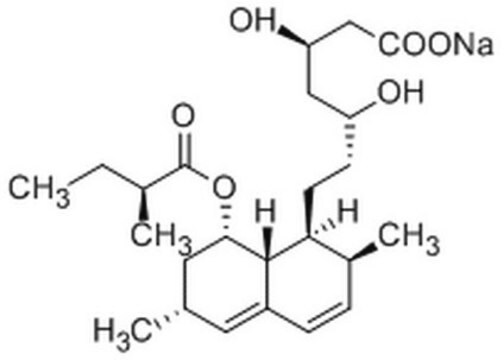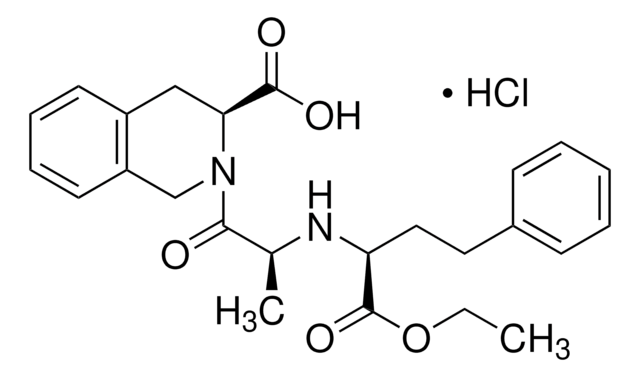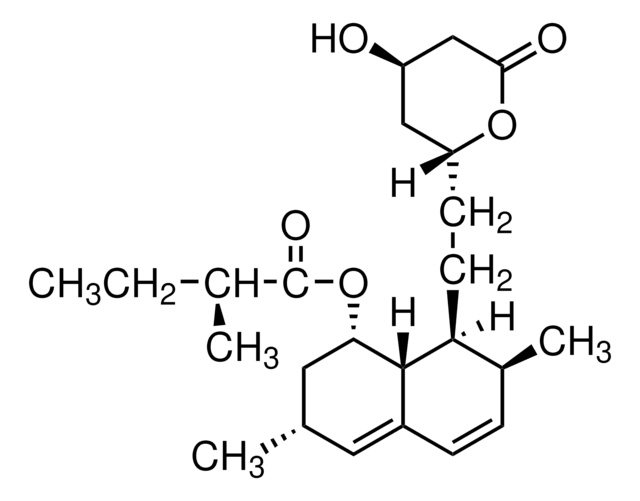M4667
DL-Mevalonsäurelacton
~97% (titration)
Synonym(e):
(±)-β-Hydroxy-β-methyl-δ-valerolacton, (±)-Mevalonolacton, DL-3-Hydroxy-3-methyl-δ-valerolacton, DL-Mevalolacton
About This Item
Empfohlene Produkte
Assay
~97% (titration)
Qualitätsniveau
Lagertemp.
−20°C
SMILES String
CC1(O)CCOC(=O)C1
InChI
1S/C6H10O3/c1-6(8)2-3-9-5(7)4-6/h8H,2-4H2,1H3
InChIKey
JYVXNLLUYHCIIH-UHFFFAOYSA-N
Suchen Sie nach ähnlichen Produkten? Aufrufen Leitfaden zum Produktvergleich
Allgemeine Beschreibung
Anwendung
- zur Untersuchung der Auswirkungen von Statin auf die Prenylierung von Ras- und Rho-GTPasen
- zur Analyse der Isoprenoid-Biosynthesewege in Listeria monocytogenes
- zur Untersuchung der Auswirkungen von Statinen auf die Proliferation und Migration von HUVECs (HGF-induzierte humane Endothelzellen der Nabelschnurvene)
Sonstige Hinweise
Lagerklassenschlüssel
11 - Combustible Solids
WGK
WGK 3
Flammpunkt (°F)
235.4 °F - closed cup
Flammpunkt (°C)
113 °C - closed cup
Persönliche Schutzausrüstung
Eyeshields, Gloves, type N95 (US)
Analysenzertifikate (COA)
Suchen Sie nach Analysenzertifikate (COA), indem Sie die Lot-/Chargennummer des Produkts eingeben. Lot- und Chargennummern sind auf dem Produktetikett hinter den Wörtern ‘Lot’ oder ‘Batch’ (Lot oder Charge) zu finden.
Besitzen Sie dieses Produkt bereits?
In der Dokumentenbibliothek finden Sie die Dokumentation zu den Produkten, die Sie kürzlich erworben haben.
Kunden haben sich ebenfalls angesehen
Artikel
Biosynthesis of cholesterol generally takes place in the endoplasmic reticulum of hepatic cells and begins with acetyl- CoA, which is mainly derived from an oxidation reaction in the mitochondria. Acetyl-CoA and acetoacetyl-CoA are converted to 3-hydroxy- 3-methylglutaryl-CoA (HMG-CoA) by HMG-CoA synthase.
Unser Team von Wissenschaftlern verfügt über Erfahrung in allen Forschungsbereichen einschließlich Life Science, Materialwissenschaften, chemischer Synthese, Chromatographie, Analytik und vielen mehr..
Setzen Sie sich mit dem technischen Dienst in Verbindung.
